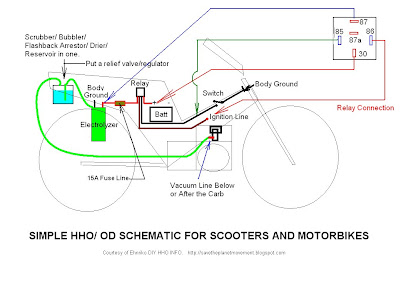
(Above is a Super 7 that experienced a thermal runaway on only 20gm. Baking Soda... see how the points are burned. But the good thing about the Super 7 is, it is not that sensitive. Once conditioned, you can reverse the polarity connections and still have no problems and even go back again to its old configuration and still work fine.)
You are now probably bombarded with the ideas that bigger is better... more is better... more LPMs', Gas flow and Bigger Bubbles is good.
I hate to burst the bubble. But contrary to what you are all led to believe.
Less is actually More! Small is actually Better! This is actually true in most and mainly on all cases. When I was first amazed with the incredible mileage gains I got from the HHO Purple Bug, I only had 0.1LPM's and no electrolytes in my system. I had a 1600 motor in the bug and it was used for racing... it normally make 6km to a liter of gas when I had this module hooked up to it, it made 12 km per liter. My unit isn't heating up, it didn't have thermal runaways nor meltdown happening.
Recently, I tried various configurations and also played with electrolytes... I was amazed with the gas production rates... but I am not impressed with the heat building up as well as the amperage rising. Definitely bad for the electrical system as well as the PVC Casing.
Again, I tried to do it with lesser electrolyte concentration... but it still went too hot. I guess, I will have to stick with less again. If it worked perfectly well the last time... then I must have been doing something right after all. Then why am I still entertaining other concepts, ways or techniques that have been problematic in the first place?
Perhaps, or maybe because I am feeling a bit competitive? I guess there really is no contest here about anything... but there is only one thing I am sure of. There is a silent race to make the world green.
The super 7 design which is my innovation... is actually an unpatented design and is also placed in open source. Though, a few examples were made and are in use. It is still a beta product. There is a challenge in casing improvement. It works passively and is designed to work on a fully saturated closed system. It also works well with an open system. The nice feature of this design is that it is a honeycomb configuration. It maximizes the usable space inside a 4" diameter circle with 7 bigger and 7 smaller tubes. The contacts are all TIG Welded for secured connections and better electrical energy flow, not to mention - Safety. It is made in a way that it allows physical extraction of HHO to be easier for engine intake Vacuum pressure.
The Super 7 builds up HHO a bit slower than all the other designs in the HHO Market since it is only designed to operate on tap water... a substitute electrolyte of a Distilled Water with a very few grams of Baking Soda can also be used. This will generate enough bubbles that are very fine. But when the vacuum extraction kicks in higher negative pressure is increased significantly and may and will also increase the amperage of the unit, the heat or thermal runaway will be way too much for the PVC casing to handle, wharfing may result which may cause water leakage.
The Super 7 draws an average of 2AMPS only... The Heat build-up is also moderate, a conditioned tube will not form muck anymore. This is a very reliable set up. This single unit is roughly equivalent to about 6 mason jars of the water4gas product using only normal tap water with very small AMPs draw.
At 0.10LPM of good quality HHO, we are certain of extracting about 1 liter of quality explosive HHO in 10 minutes or less. If this is spread over the entire use of the car in 10 minutes... we are definitely adding a liter of NOs-like gas in our operation. To use a multiple cell configuration... is to increase the LPM... I would go for this, but if I dont have enough Amps reserve in my Batteries, it will be raising a problem with faster discharging of the battery, the normal alternator charging will not be sufficient to compensate the ampere draw. But with a reliable PWM... results might be the same using a multi-cell array. For example, you want to make 1 LPM... then use a PWM (Pulse Width Motor) on your Single unit Super 7 cell... then you can get 1 LPM oh HHO; definitely, you will be getting more serious gains out of this. But again, timing is key. We need to adjust our engine timing according to the new fuel octane characteristics and of course, going back to the issue of battery discharging due to the ampere draw requirement of more cells.
But then again, If I were you, I would stick to making your first most reliable set up and use it for months first until you come to the point that you can confidently say... "It's time for an upgrade."
Better Slower but Surer... Haste makes waste.




